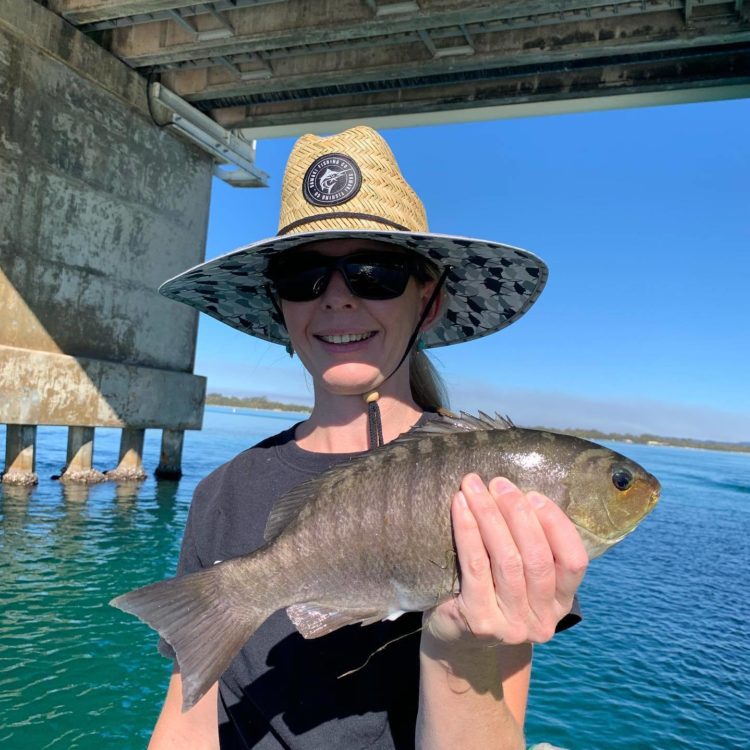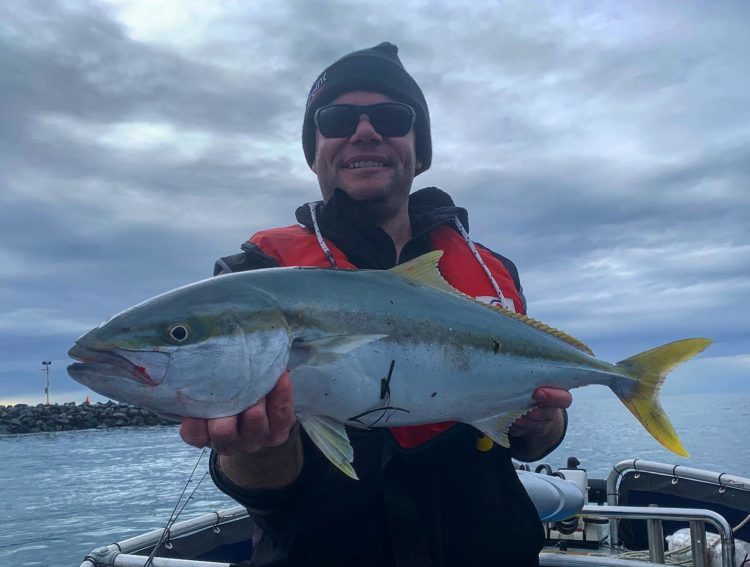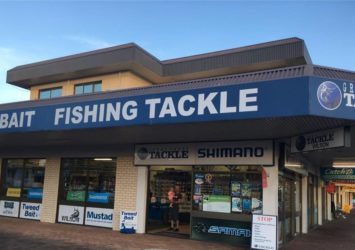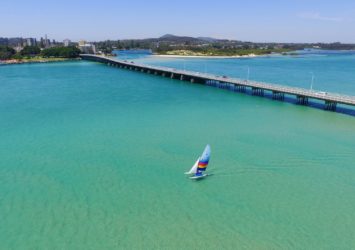Floating on some of the most pristine waterways in the world, it’s no wonder the Barrington Coast sits so high on a lot of anglers’ bucket lists!
While the area is an insanely popular summer holiday destination, a fishing adventure can be planned at any time of the year as there is always something biting! Here's my seasonal guide to your next angling adventure in the Barrrington Coast.
Winter
Chilly, light winds with clear and calm waters. Winter is perfect for chasing bream, luderick and snapper.
As well as producing some amazing estuary fishing, winter here is synonymous in the fishing community with big snapper and great offshore reef fishing.
The winter months are absolutely beautiful in the Barrington Coast. Our weather patterns are often dominated by gentle westerly winds which translate into clear, calm waters. For estuary fishermen, the cooler months of the year are the very best time of the year to chase bream and luderick. Both species undertake a very similar annual spawning ritual which sees them congregating en masse throughout the lower sections of Wallis Lake, particularly on the rock walls and around the bridge pylons.
Chasing bream in winter is really easy fishing and its very accessible with or without a boat. You don’t need any fancy gear, just a light-medium weight rod with some 3-5kg line will do the trick.
Rig your rod with a small pea sized sinker running straight down to a #1 or #2 baitholder hook and load your hook up with baits such as mullet fillet, whitebait, mullet or chicken gut, pilchard, garfish or prawn and toss it off the rock wall around the high tide. This simple method is all but fool proof for the months of May, June and July.
For those that like to fish with lures, you can fish in a very similar method using small profile soft plastics on light spin outfits. As is always the case, the lighter you can fish in both line weight and jig head weight the more bites you will get, fishing 2kg leaders will get you a fish a cast but landing them is a completely different story!

Luderick fishing is an age-old tradition which is much more specific in both technique and bait than the aforementioned bream fishing. The specialised rig can be a bit tricky to get the hang of but your local tackle shop (including Great Lakes Tackle) should be able to help you out there.
Luderick are an omnivorous species which mainly feeds on aquatic algae so one of the biggest challenges is finding green weed for bait, luckily the last few years has seen an explosion in the popularity of artificial weed offerings which tend to work just as good if not better than the real thing!
Once you get your rig sorted and some bait or weed ‘flies’, you can fish just about anywhere for these fish from the mouth of the river right up to around Wallis Island which sits almost in the middle of the estuary system.

As well as producing some amazing estuary fishing, winter in the Barrington Coast is synonymous in the fishing community with big snapper and great offshore reef fishing. Hitting the water before sunrise and making a mad dash along the coast with three layers of clothing, beanies, gloves and gumboots is all worth it when you manage to hook onto some big shallow water winter reds. For those that prefer to fish in comfort, a late start once the sun gets up a little can still see you heading out to the deeper reefs and flathead grounds where you can expect to land a nice mixed bag of teraglin, pearl perch, morwong, pigfish, bar cod and of course some very tasty flathead!
Spring
Warmer water means hungry predators highlighted by trophy flathead and an abundance of whiting but the highlight is the return of the yellowtail kingfish to the reefs and estuary.
As spring comes around things really start to wake from their winter slumber. In the estuary crabs and prawns start to become more active and the shallow, protected waters start to really warm up with the increase in day time temperatures. The combination of warm water and lots of food results in hungry predators! September-October are really good months for chasing big trophy flathead and the technique is really straight forward. Think about fishing the shallow sand and weed beds up around ‘The Cut’, Twin Islands, Lani's and Wallis Island using big soft plastics, stick baits or bent minnows.
These areas hold a lot of large fish and the advances in fishing gear and knowledge over the last five years or so has made them very accessible, if you do choose to target these big fish please look after them and practice catch-and-release so that our future generations can also enjoy chasing them.
If you do choose to target these big fish please look after them and practice catch-and-release so that our future generations can also enjoy chasing them.
Whiting are the other very popular spring time species. We have the option to fish for two types of whiting in Wallis Lake over the spring and summer months; sand whiting and trumpeter whiting. Trumpeter whiting are only a small species but they are very tasty on the plate, they can be found throughout most of the deeper channels up around Wallis Island and Green Point.
Their larger relatives the Sand Whiting are also great on the plate and are generally found in the shallower sections of the estuary, to target these fish you will need to focus on areas such as the sand flats down around our iconic bridge and fish them using live nippers, Beach Worms, prawns, small soft plastics or surface lures.
From the end of October through to December we see a dramatic increase in the numbers of large yellowtail kingfish hanging about our inshore reefs and estuary and this is the very best time of the year to try your luck at landing an absolute beast of a fish!

With the larger models hitting the 1.5m mark, these renowned fighters present a huge challenge to even the best anglers and fishing gear. Targeting them is fairly straight forward, large surface lures definitely work (although there can be a lot of casts in between fish) but fishing with live baits is all but a sure-fire way of hooking up. Live squid, slimy mackerel and yellowtail scad will all work but you need to fish them on very heavy gear, 22kg main line is the bare minimum with most anglers preferring to fish 35-45kg lines fished over a similarly heavy rod matched up to a reel with plenty of pulling power!
Summer-Autumn
The East Coast Current delivers trophy fish to the region including giant trevally, mahi mahi, longtail tuna and black marlin.
As we move into summer and our coastal waters warm we begin to see the effects of the East Australian Current which delivers all sorts of pelagic goodies to us (and other interesting species such as giant trevally, mangrove jack, purple cod, tuskfish and even the odd coral trout).
We generally have a good run of black marlin, mahi mahi and longtail tuna over the summer months and they can hang about right through until the end of autumn.

If the currents and weather work in our favour we also have a great little spotted mackerel and Spanish mackerel season which tends to start around the end of February or March.
The Barrington Coast truly is an angler’s paradise, whether you are just starting out or have 50 years’ fishing experience under your belt, there is always something on offer in and around the beautiful towns of Forster and Tuncurry.

